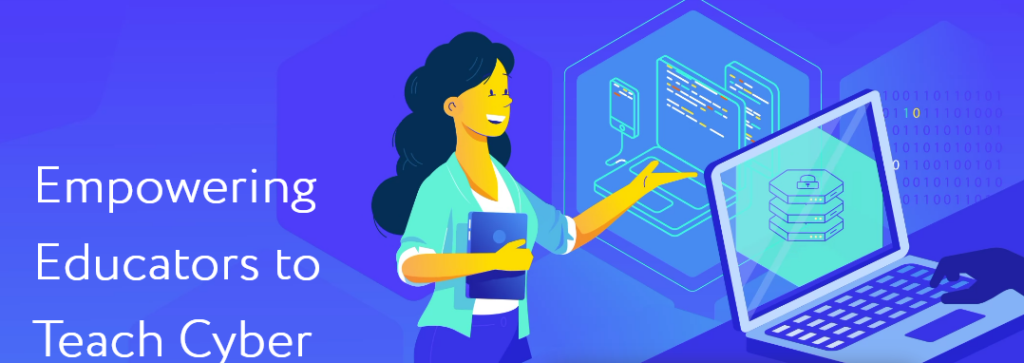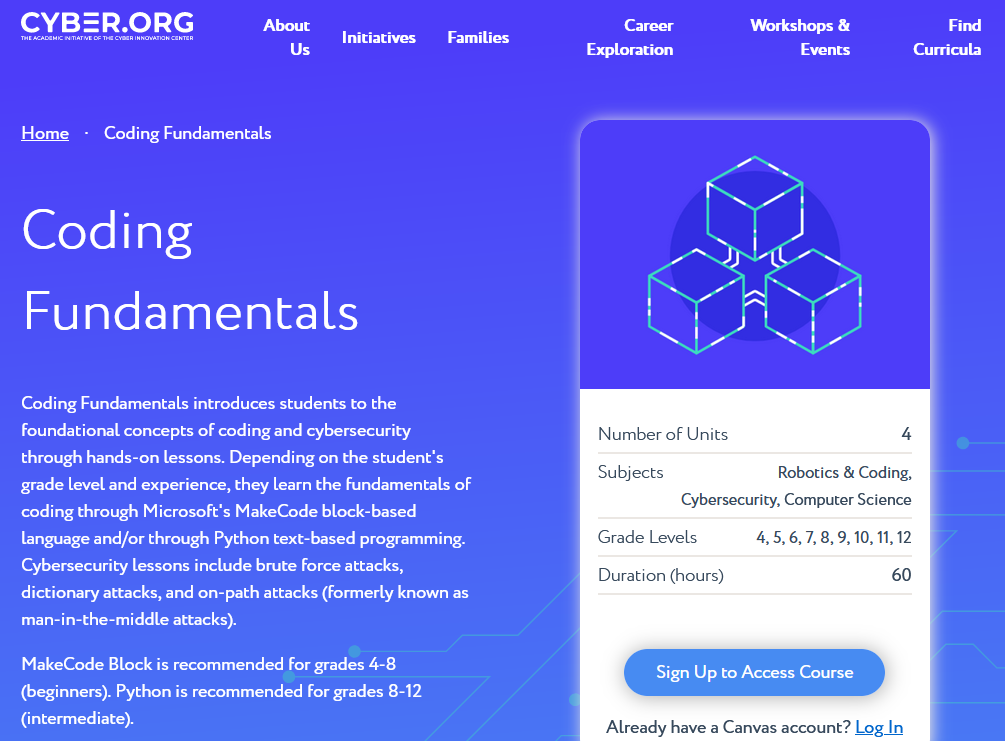Worried about cybersecurity and preparing students for the future workforce? Let’s explore a new resource and some ways to stay up to date.
Preparing the K-12 Workforce
Every day, thousands, if not millions, of people get emails from spammers. Some of the spammers are advertisers, hawking their products. Others offer advertisement-laden livestreams and webinars. Consider this one example on cybersecurity:
Tech workforces are changing fast. Is your workforce keeping up? Join us [date] on LinkedIn Live. Watch thisfuture-ready digital workforce informational webinar. Learn how to evolve your tech workforce to meet the future tech demands your organization needs. You will learn how to make it thrive. You’ll get rich, er capitalize, on your digital tech workforce transformation.
You get the idea. What if there was a way to engage K-12 students and prepare them to be that tech workforce? Let’s explore a new initiative – expanding cybersecurity education nationwide.
Did You Know?
TCEA offers a Cybersecurity for Educators: Data Guardian online, self-paced course. With this course, you can learn the essentials of protecting yourself and confidential data. It’s geared for classroom teachers, district professionals who aren’t cybersecurity experts. You need to know what’s in this course and put it into practice. Don’t be the reason for the next data breach in your organization.
Why Is It Important to Prepare Students?
I attribute my failure to learn how to code to a terrible mathematics program. Who could know that not learning math in middle school would have long-lasting effects? And the sooner we learn how math and coding relate, the better. That failure, whatever the reason, has resulted in a profound gap:
Cyberseek reported there are around 1.1 million people employed in cybersecurity in the United States. Over 700,000 unfilled positions are currently available. Worldwide, the cyber workforce shortfall is approximately 3.5 million people. (source)
A question many Americans ask is, “How do we prepare our children for a future in information security?”
Preparing Our Children to Be Secure
Getting our children ready means asking, “What do they need to know now to be ready for the future?” To find that out, check with the Cybersecurity and Infrastructure Security Agency (CISA).

Jen Easterly, CISA Director, says that the K-12 cybersecurity education program is going nationwide. The program began in Louisiana through a grant and focused on high school students.
The CYBER.ORG Range is accessible to all K-12 students but is primarily geared toward high school students interested in learning core cybersecurity concepts and curriculum.
With over 750,000 open cybersecurity positions and continued cyberattacks on both the public and private sectors, it is more critical than ever to expand access to cybersecurity education.
Source: Cyber Innovation Center
The goal of CYBER.org is to empower educators to teach cyber with confidence. This should result in students with the skills and passion needed to succeed.
Free Cyber Curricula
You can find free cyber curricula on CYBER.org, including lessons, for use in K-12 settings. Some examples of the resources found on the site with a quick search include:
- Cybersecurity Basics for Grades K-8
- CyberSecurity for Grades 10-12
- Personally Identifiable Information: Keys to Cybersecurity for Grades 3, 4, and 5
There’s a lot more content, organized by grade level and subject, that you can see. Subjects include:
- Career & Technical Education
- Computer Science
- Cybersecurity
- Engineering
- Humanities
- Math
- Robotics and Coding
- Science
These materials also encompass K-12 grades, so there is a wealth of information. Entry points abound for any educator who is seeking to prepare students for the future.

Engaging Students Early
One of the intriguing resources available via CYBER.org? Coding Fundamentals.
Coding Fundamentals introduces students to the foundational concepts of coding and cybersecurity. It does this through hands-on lessons. Students at differing grade levels learn the fundamentals in one of two ways: Microsoft’s MakeCode block-based language and/or through Python text-based programming.
Cybersecurity lessons include brute force attacks, dictionary attacks, and on-path attacks (formerly known as man-in-the-middle attacks).
MakeCode Block is recommended for grades 4-8 (beginners). Python is recommended for grades 8-12 (intermediate).
Don’t wait until it’s too late. Get your students, and your own children, learning the fundamentals.
Feature Image Source
Screenshot by author

